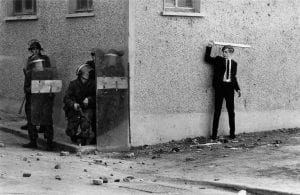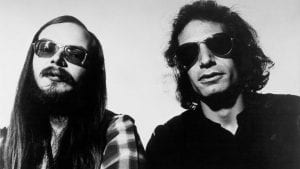Communicative English class about traffic and congestion, featuring cinema, rock videos, adverts and more
My last post about Michael Patterson’s work and portals to other dimensions put me in mind of one of cinema’s mindblowingly strange opening scenes, namely that of Fellini’s 8 1/2 (1963). The sequence shares much of the urban claustrophobia and anxiety that characterizes Patterson’s Commuter, as well as its framing of that unease within the context of travel and transport. Continue reading






 Martin Parr, Chicago, 1997
Martin Parr, Chicago, 1997
 Don McCullin, Northern Ireland, The Bogside, Londonderry, 1971
Don McCullin, Northern Ireland, The Bogside, Londonderry, 1971 Walter Becker and Donald Fagen of Steely Dan
Walter Becker and Donald Fagen of Steely Dan